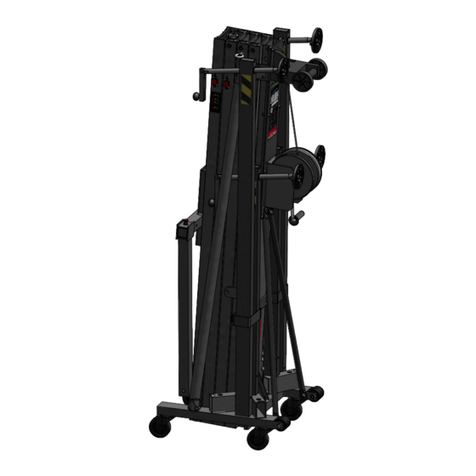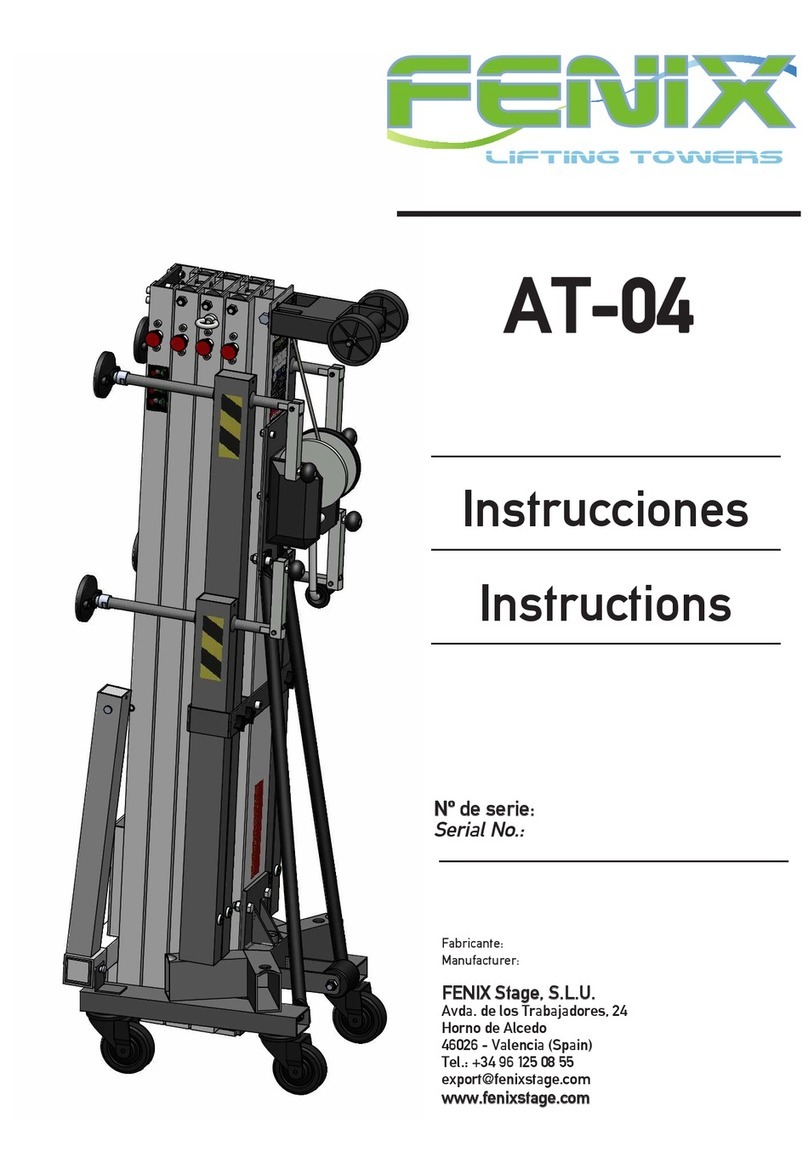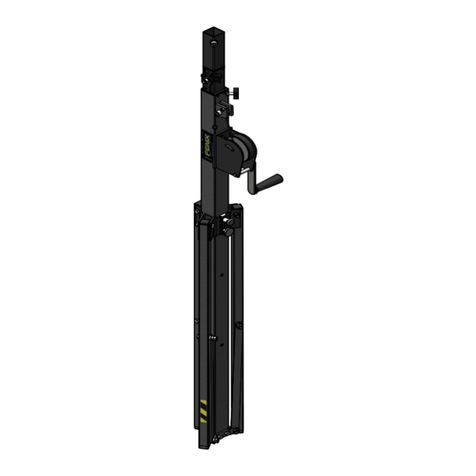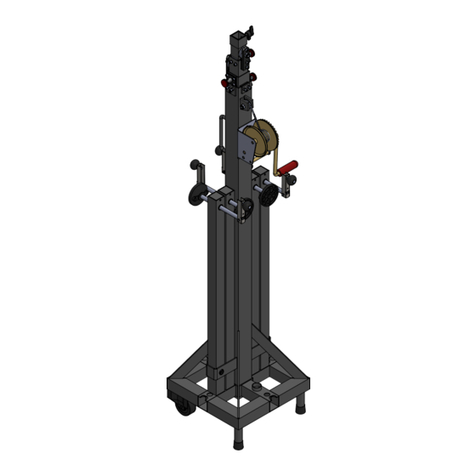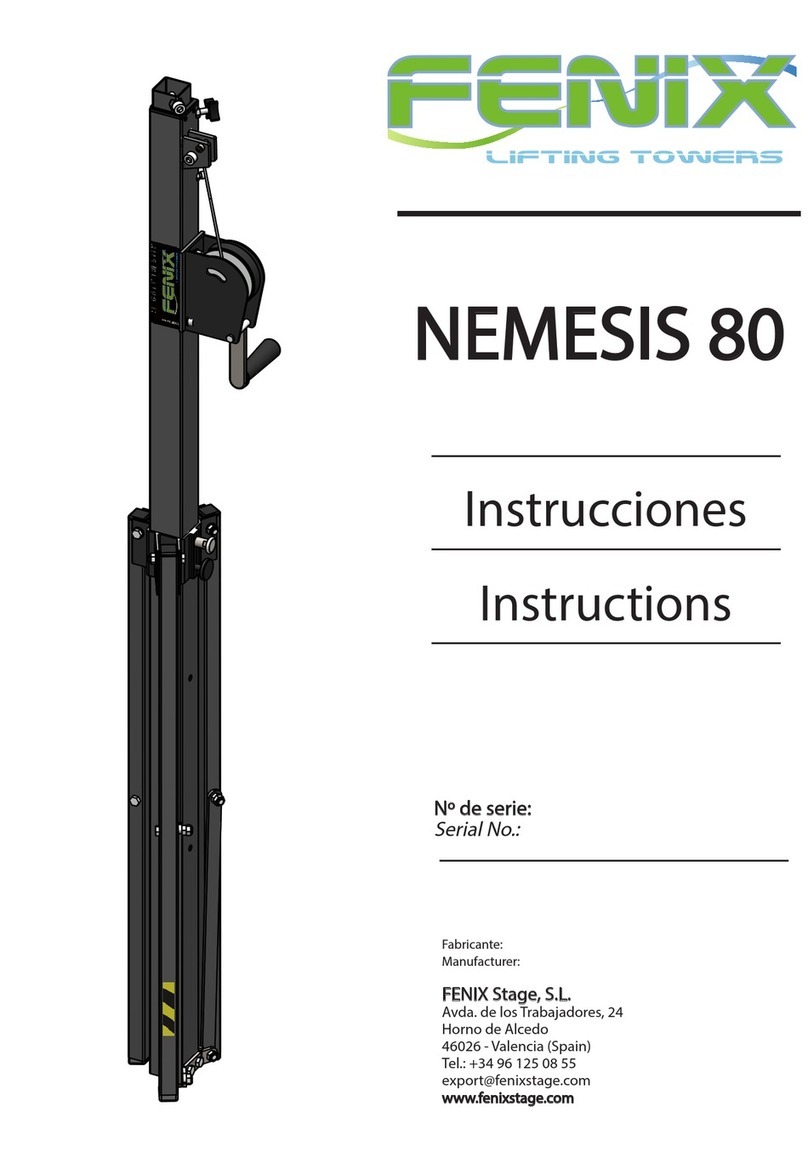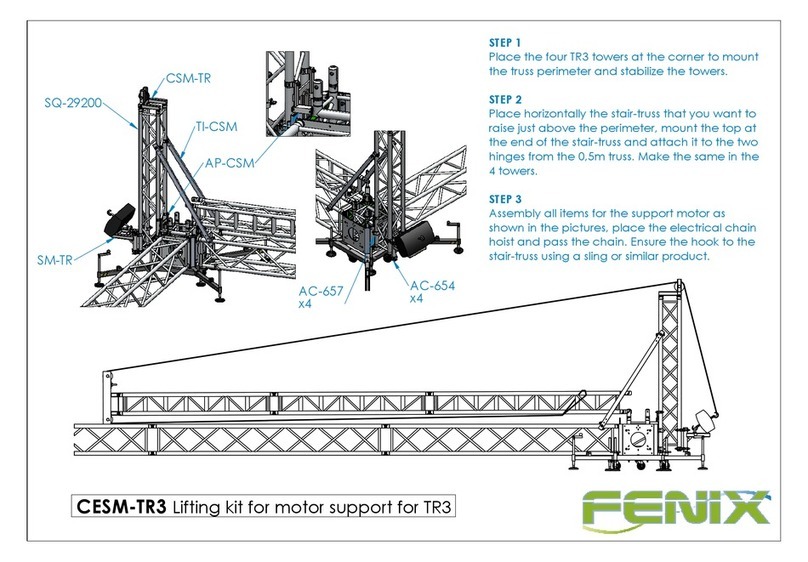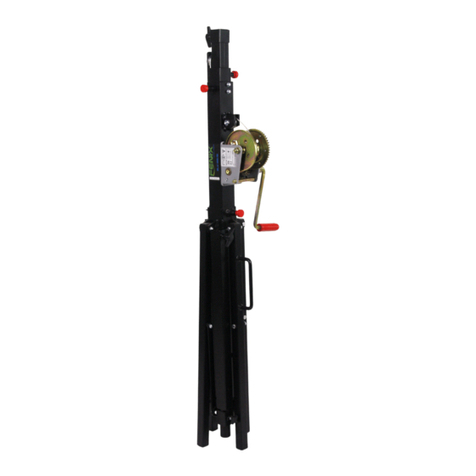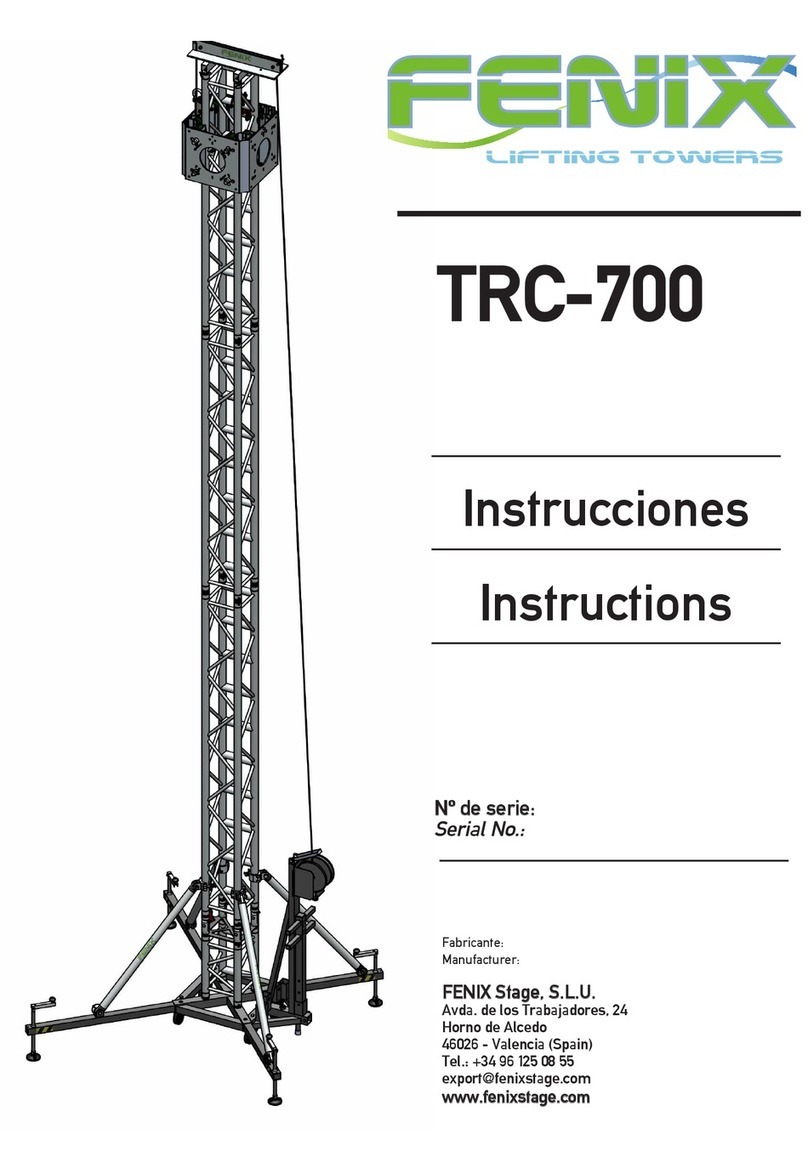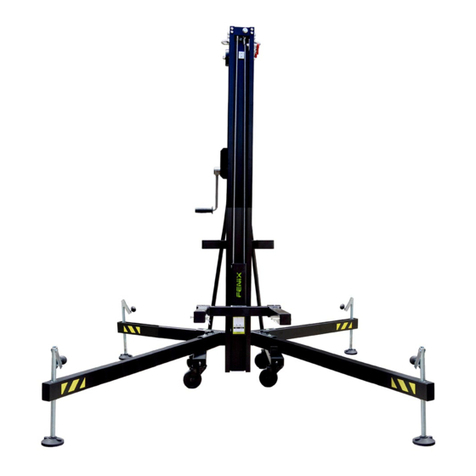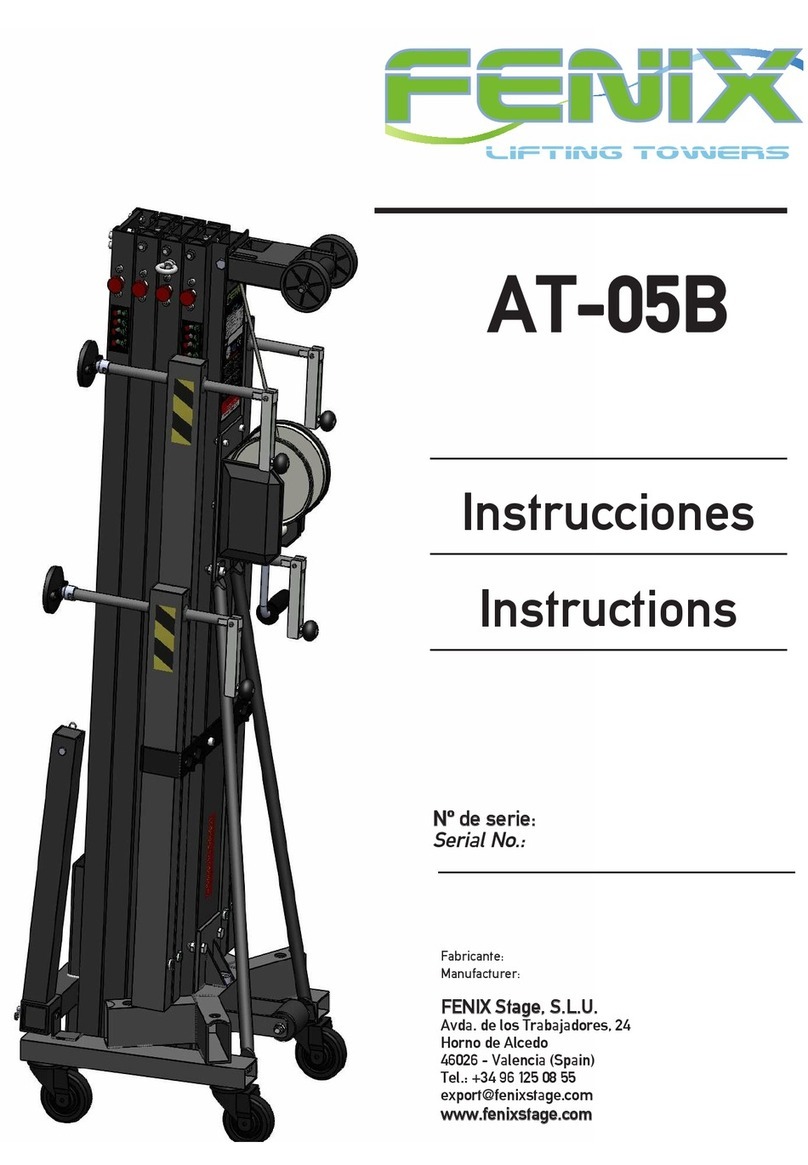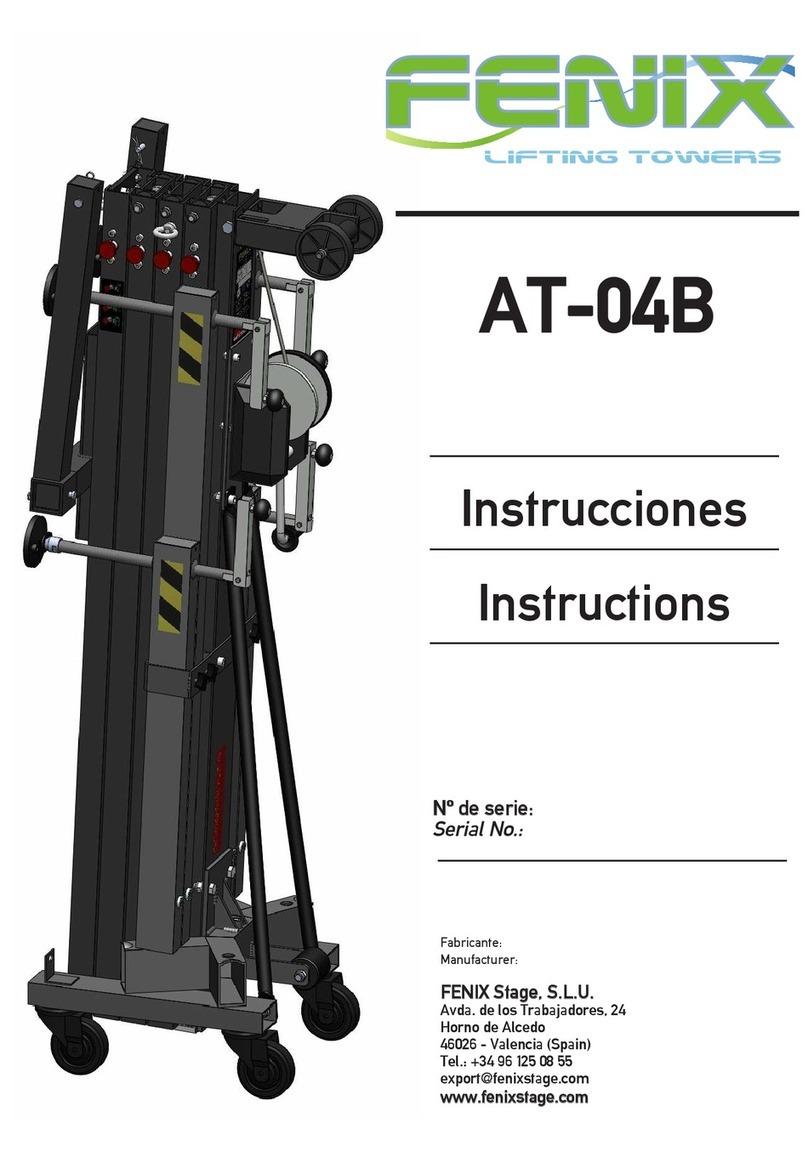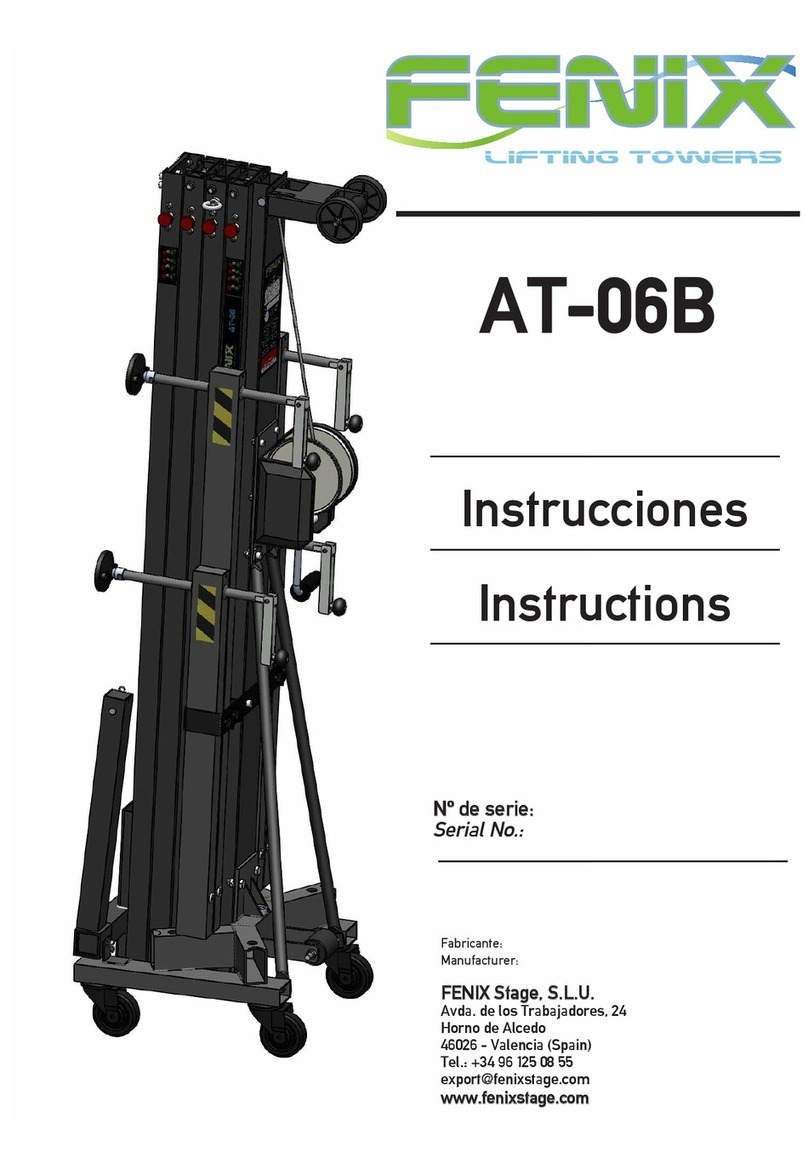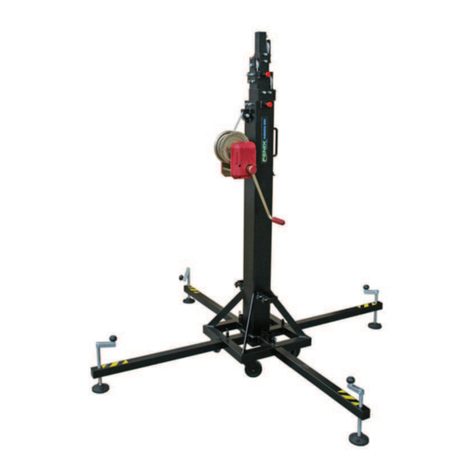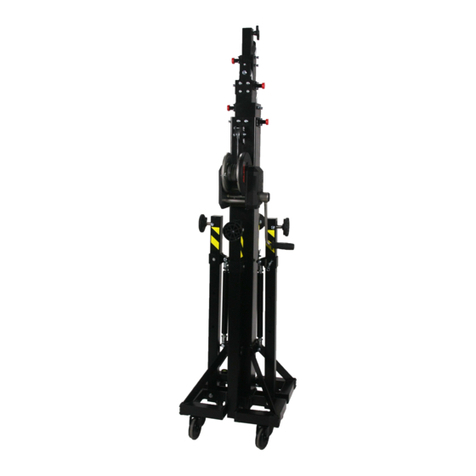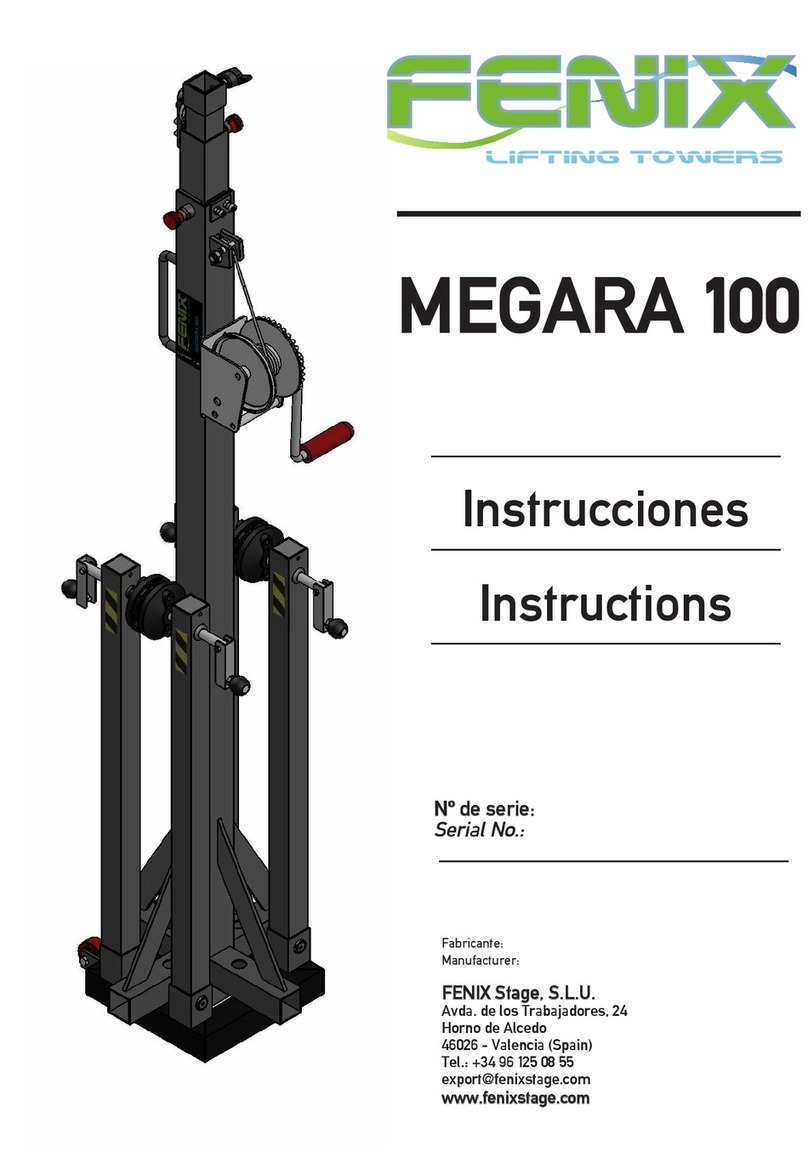
55
EXPLICACIÓN NORMA BGV C1 / EXPLANATION BGV C1 REGULATION
NORMA DGUV V17/18. Explicación
DGUV V17/18 (antes BGVC1) es una norma
que regula los elementos de escenario y pro-
ducción en la industria del entretenimiento.
Los equipos de elevación y rigging son parte
de esta norma y cubren estructuras y otros
elementos técnicos. Adoptar la norma DGUV
V17/18 es totalmente voluntaria (excepto en
Alemania) pero su adopción se requiere ge-
neralmente por compañías aseguradoras y de
hecho se está convirtiendo en una norma en
la industria.La aplicación de esta norma sobre
las torres elevadoras es vital debido a que, en
teatros, escenarios, etc., se usan para par mo-
ver cargas sobre artistas, personal técnico etc.,
y en algunos casos sobre espectadores, repre-
sentando un riesgo potencial de caída.
NORMA DGUV V17/18. Campos de aplica-
ción
Esta norma está orientada de dos maneras:
Por un lado, las torres elevadoras adoptan di-
seños y materiales con el objeto de conseguir
un alto grado de seguridad en magnitudes ta-
les como carga soportada, equilibrio, resisten-
cia a la fricción, etc. Así, las torres elevadoras
FENIX certicadas DGUV V17/18, aseguran
al usuario que han pasado estrictos controles
durante su diseño, elección de materiales o ve-
ricaciones de carga y esfuerzo. Por otro lado,
con el n de conseguir un funcionamiento
óptimo con estas unidades, es recomendable,
además de un uso responsable de la unidad
(cumpliendo unas normas básicas como son
obedecer la carga máxima soportada o su
equilibrio), un mantenimiento periódico el
cual debe ser llevado a cabo por técnicos ex-
pertos, comprobando el buen estado del cable
de acero y cabrestante, el funcionamiento de
los pasadores de seguridad y el plegado/des-
plegado del sistema completo de perles.
Todos los test mencionados solo son obligato-
rios en aquellos países con regulación especí-
ca en la materia, aplicada mediante regulacio-
nes o leyes. Como fabricantes, recomendamos
pasar todos los test con el objetivo de prevenir
cualquier daño y asegurar un buen funciona-
miento de los sistemas de elevación.
DGUV V17/18 NORM REGULATION. Ex-
planation
DGUV V17/18 is a norm that regulates the
stage and production elements in the enter-
tainment industry. Liing equipment and ri-
gging are part of this norm and cover struc-
tures and other technical elements. Adopt
DGUV V17/18 is totally voluntary (except in
Germany) but its adoption is required by in-
surance companies and indeed is becoming a
norm in the industry e application of this
norm on lier towers is vital because, in thea-
ters, stages, etc.., are used to move loads above
artists, technical sta, etc... and in some cases,
above viewers, representing a potential risk
of fall.
NORM DGUV V17/18. Fields of application
is standard is oriented in two ways:
On the one hand, liing towers adopt designs
and materials to achieve a high degree of safe-
ty in quantities such as supported load, equili-
brium, resistance to friction, etc. us, FENIX
liing towers DGUV V17/18 certied assure
the user that they have passed strict controls
during design, choice of materials or load
checks and eort. On the other hand, in order
to achieve an optimal performance with these
units, it is recommended, apart from a res-
ponsible use of the unit, (meeting basic norms
such as obey the maximum load or balance), a
periodic maintenance, which must be carried
out by expert technicians, checking the condi-
tion of the steel cable and winch, the functio-
ning of the security pins and the folding/un-
folding of all sections.
All the above tests are only mandatory in tho-
se countries with specic regulations on the
matter, applied through regulations or laws.
As manufacturers, we recommend passing all
tests in order to prevent
damage and ensure proper operation of P.A.
li systems.
